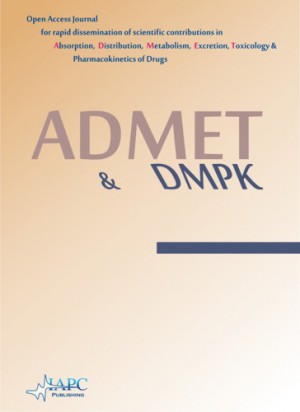
ADMET & DMPK
Yazarlar: David Levitt
Konular:-
DOI:10.5599/admet.579
Anahtar Kelimeler:Pharmacokinetics,Anesthetics,Interstitial,Extracellular,Adipose
Özet: One of the primary objectives of physiologically based pharmacokinetics (PBPK) is the prediction of a drug’s pharmacokinetics just from knowledge of its physicochemical structure. Unfortunately, at present, the accuracy of this prediction is limited for most drugs because of uncertainty about the drug’s organ/blood partition coefficient (K). However, there are two classes of solutes which are exceptions to this: 1) the highly lipid soluble (HLS) solutes, and 2) the extracellular (ECS) solutes. Since the HLS drugs (eg, volatile anesthetics, propofol, cannabinol) have lipid/water partition coefficients (PL/W) of 100 or greater, their K is dominated by the tissue fat fraction and one can accurately predict K just from in vitro measurements of PL/W along with prior anatomic measurements of the fat fraction of the organs in the PBPK model. Since the ECS drugs, such as most antibiotics, cannot penetrate cells, they are not subject to the intracellular binding that complicates the prediction of K for the weak bases and acids. The ECS K is determined primarily by plasma and interstitial albumin binding and can be predicted from in vitro measurements of plasma albumin binding along with prior measurements of interstitial tissue volume and albumin concentrations. This review provides an in depth discussion of the PBPK modeling of these two drug classes along with many specific clinical examples illustrating the good PBPK predictions possible with just zero (volatile anesthetics) or 1 (the clearance) adjustable parameter. The PBPK analysis uses PKQuest, a freely distributed, general purpose pharmacokinetic program. PKQuest is designed so that application to the HLS and ECS solute classes is especially easy. The user only needs to enter the specific parameters that are required to characterize the drug (eg, PL/W for HLS or plasma albumin binding for ECS) with all the other PBPK parameters (organ blood flow, fat fraction, extracellular volumes, etc.) are set by default.
Dergi editörleri editör girişini kullanarak sisteme giriş yapabilirler. Editör girişi için tıklayınız.